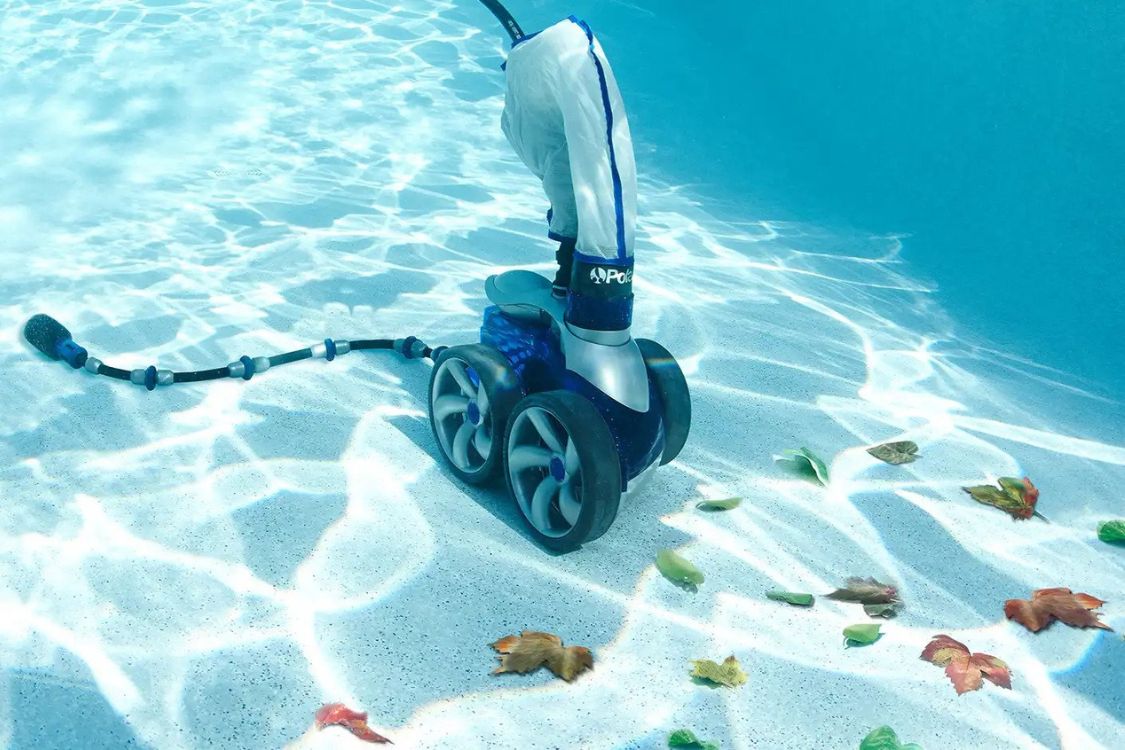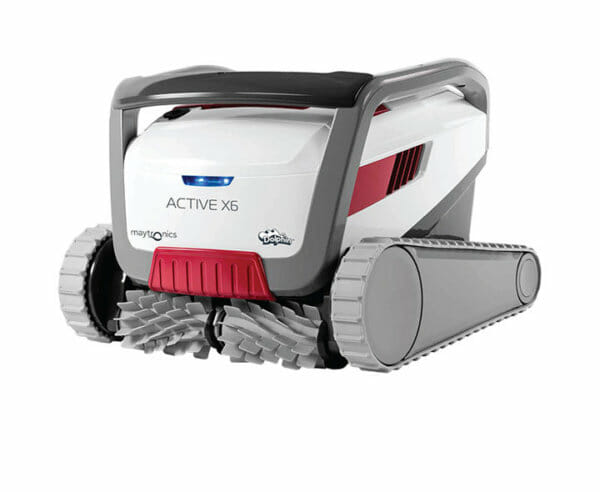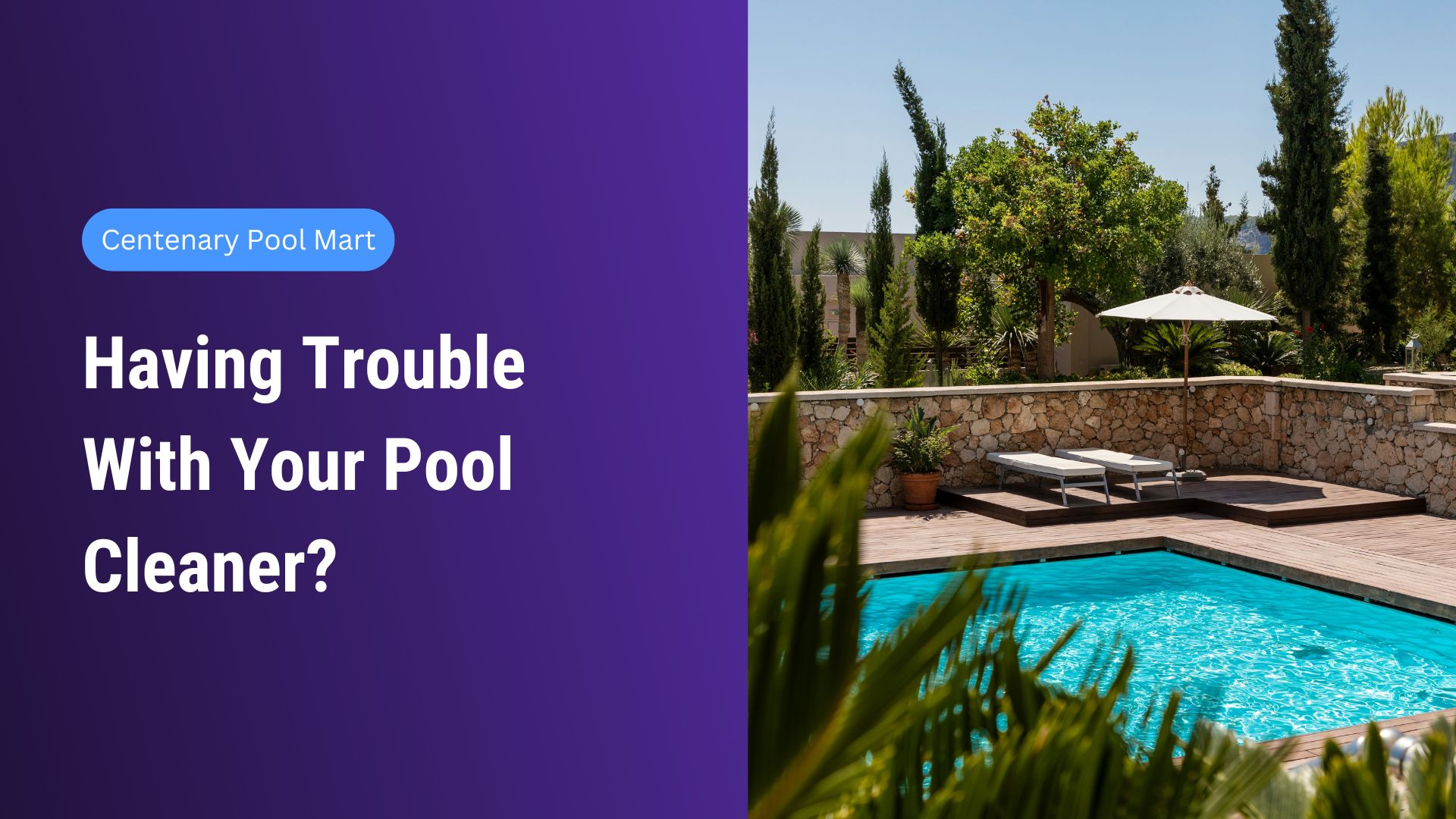Another day, another potential trouble in poolside paradise. Of course, with automated pool equipment there is always a chance for something going wrong. However, with our handy little pool cleaner troubleshooting guide below we can help you get back on track with pool maintenance in no time.
We put together a list of the most common problems and how to fix them without a hefty bill coming your way. We even threw in a video from the Big Boss, Marcus, to walk you through the steps of pool cleaner troubleshooting. But first thing first…

What is a pool cleaner
An automatic pool cleaner is a vacuum cleaner designed to collect debris and sediment from swimming pools with minimal human intervention. There are three main types of automated pool cleaners: suction-side cleaners, pressure-side cleaners, and electric robotic cleaners.
Suction-side cleaners

These cleaners are attached to a vacuum plate in the skimmer or a dedicated extraction line on the pool’s side. They are powered by the pool’s main pump and are suitable for pools with light debris like sand. However, they can easily clog with large debris and may increase electricity costs (and here is your first potential trouble).
Pressure-side cleaners

These cleaners use pressurised water from a return jet or a dedicated connection on the pool to propel themselves and suck up debris. They are effective but can be more expensive due to the need for a booster pump, which increases electricity usage (sorry to keep circling back to this but hey, electricity is expensive).
Robotic cleaners

Now, robotic pool cleaners work independently using electricity and have an onboard filter basket to prevent clogging the pool’s filtration system. They can clean walls and tile bands efficiently and often feature timers for convenient cleaning scheduling.
Overall, automatic pool cleaners offer benefits such as saving time on manual cleaning tasks, improving water circulation, reducing filter wear, enhancing water heating distribution, and allowing operation under pool covers.
However, while these cleaners are efficient, they do not replace the need for regular water testing, balancing, and occasional manual cleaning to maintain optimal water quality, so whichever these suckers you decide to employ, you still need to be the manager around your pool.
How does a pool cleaner work
No real surprise here. Automatic pool cleaners work by utilising different mechanisms depending on their type.
Suction-side cleaners
These cleaners connect to the skimmer or a dedicated suction line, using the pool’s pump to create suction that propels the cleaner around the pool. They collect debris and sediment, sending it to the pump filter basket and pool filter (again, try to avoid the big stuff, your Kreepy Krawly prefers the small kind of mess).
For suction-side cleaners, the pool pump must be running for them to operate effectively. These cleaners are cost-effective, easy to install, and efficient at picking up debris like dirt, silt, and algae.
Pressure-side cleaners
These cleaners use water from a return jet or a dedicated connection to propel themselves around the pool. They create a vacuum to suck up debris and often feature a sweep hose for additional cleaning.
Pressure-side cleaners are known for their effectiveness but may require additional installation costs due to needing a dedicated connection point and an extra pump.
Robotic cleaners
Robotic pool cleaners have their filtration system and operate independently using electricity. They can clean walls, tile bands, and the waterline efficiently. Robotic cleaners are energy-efficient and can be controlled remotely.
Robotic cleaners offer advanced features like customisable cleaning patterns, energy efficiency, and thorough cleaning of your pool.
Regular Pool Cleaner Maintenance
Now, the first thing you can do to avoid pool cleaner problems is regular pool maintenance. To maintain a pool cleaner effectively, regular checks are essential. Here are some key maintenance requirements.
Weekly Checks
Regularly inspect the filter, skimmer basket, and water chemistry to ensure optimal performance and water quality.
Circulation
Run the pool pump for 8-12 hours daily to maintain proper water circulation. Backwash or clean the filter if the pressure exceeds 10-15 psi.
Cleaning
Brush the walls, steps, ladders, and areas with low circulation to prevent algae growth and maintain cleanliness. Best to make cleaning your swimming pool a weekly routine to remove debris and maintain water clarity.
Invest in Automatic Pool Cleaners
Since this article is about automatic pool cleaners, this one is a no-brainer. Consider using automatic pool cleaners to save time and effort in maintaining your pool. These cleaners help keep the pool clean without manual intervention, ensuring efficient cleaning and water quality.
In addition to these pool cleaner maintenance tasks, it’s important to clean the tiles regularly and use appropriate cleaning products like pool nets, brushes, scrubbers, and chemicals to ensure a clean and healthy swimming environment year-round. It’s safe to say that regular maintenance not only keeps the pool clean but also extends the life of the pool equipment and enhances the overall swimming experience.
Of course, even with the best pool maintenance regime, unexpected issues can pop up with your pool, so check out our very own Marcus walking you through some pool cleaner troubleshooting.
Common problems with pool cleaner
Common pool cleaner issues that can arise include a number of things. So of course we added another handy list to solve these pool cleaner problems for you.
Suction-side pool cleaner
- Short or damaged hose.
Short hoses can limit the coverage of the pool and affect the cleaner’s suction.Fix: Check for tears, bends, or blockages in the hose. Replace with a longer hose if necessary and clear any blockages to ensure proper suction.
- Damaged brushes or suction vents.
If the pool cleaner appears to be cleaning but leaves the pool bottom grimy, worn-out brushes or damaged suction vents could be the issue.Fix: Inspect and replace worn brushes or clean clogged suction vents to restore effective cleaning.
- Pool cleaner not laying flat.
If the pool cleaner appears to be cleaning but leaves the pool bottom grimy, worn-out brushes or damaged suction vents could be the issue.Fix: Inspect and replace worn brushes or clean clogged suction vents to restore effective cleaning.
-
Pool walls not being climbed.
If a robotic pool cleaner struggles to climb walls, check that the water temperature is above 60°F and adjust the handle angle to prevent water overflow.Fix: Replace the handle if necessary and inspect the propeller for defects if climbing issues persist.
- Getting caught on steps.
Pressure-side pool cleaners may get stuck on steps due to misaligned thruster jets or tangled float hoses.
Fix: Re-adjust thruster jets, gently push the cleaner away from steps, and straighten any tangled hoses to ensure uninterrupted movement for effective cleaning.
Pressure-side pool cleaner
- Slow movement.
If your pressure-side pool cleaner is moving slowly, it may be due to inadequate water pressure.Fix: Check the filter screens for debris and ensure the pump and filter are running correctly to maintain sufficient water pressure for the cleaner to operate effectively.
- Clogged wheels.
Rocks, sand, or tiny particles like sand or plaster can get lodged in the wheels of a pressure-side cleaner, hindering movement.Fix: Inspect the wheels for obstructions or damages by turning them slowly. Clear any blockages to ensure smooth movement and effective cleaning.
- Loss of pressure.
Verify that the booster pump is functioning correctly and that the filter and main pump are turned on and running to maintain the required pressure (around 30 psi) for the pressure-side cleaner to operate efficiently. -
Tangled feed hose.
Measure the feed hose to the appropriate length for your pool size to prevent tangling.Fix: Ensure the feed hose floats properly, replace waterlogged floats, and check that hose swivels rotate freely. Adjusting excess pressure at the wall fitting can prevent tangling issues.
- Incomplete pool coverage.
Adjust the thrust jet on the back centre of the cleaner where water sprays out to ensure proper coverage of the entire pool. Setting it at a different angle can alter the cleaning pattern and improve coverage.
Robotic pool cleaner
- Power issues
Inspection: Double-check the power cord connection and outlet functionality. Look for signs of wear or damage.
Power supply: Ensure the cleaner turns on and starts properly.Error messages: Note any error codes or flashing lights for troubleshooting.
Reset technique: Follow the reset procedure as per the manufacturer’s instructions. - Debris clogging or poor suction.
Filter maintenance: Regularly clean and inspect filters or debris baskets for obstructions.Drainage test: Fill the debris basket with water post-cleaning and ensure swift drainage within 30 seconds.
Impeller inspection: Check for blockages and untangle any debris like hair or leaves. - Erratic cleaning pattern.
Monitor movement: Ensure the cleaner moves smoothly without restrictions.
Suction adjustment: Experiment with adjustable suction settings to find the optimal level for effective cleaning. -
Cleaner not starting.
Power source check: Verify a secure connection and functioning power supply.
Reset and restart: Follow specific reset/restart procedures outlined in the user manual.
Professional assistance: Persistent issues may require specialised attention from professionals. - Cleaner stalling after short movements.
Clear jams: Inspect tracks, wheels, and impeller for obstructions and clear them.
Thorough cleaning: Check for any obstructions that may cause stalling and clean the cleaner thoroughly.
By addressing these common pool cleaner issues promptly and following the recommended solutions, you can ensure your pool cleaner operates efficiently, providing thorough cleaning of your pool. Regular maintenance, troubleshooting, and adherence to manufacturer guidelines are key to resolving these problems effectively.
On that note, if this is a bit too much to handle, why not give us a call? With our comprehensive pool service package we can save you the trouble, so you can get back enjoying your pool without the hassle.


